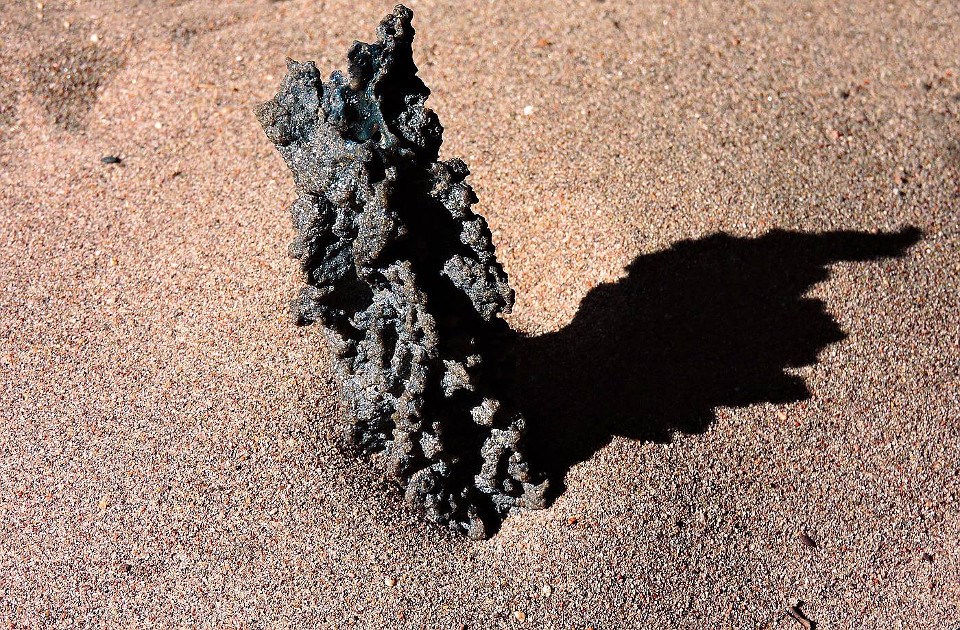Last updated: March 5, 2024
Article
Fulgurites: The Power of Lightning

NPS/Patrick Myers
At Great Sand Dunes National Park & Preserve, the explosive power of lightning is captured in blackish tubes of glass called fulgurites. At 50,000 degrees F—hotter than the surface of the sun!—lightning blasts the sand, vaporizing the area where the bolt of electricity shoots through the sand and melting the surrounding sand into dark glass.
“Fulgur” is the Latin word for lightning. Cicero, a philosopher of the Roman Empire era, used the expression “condere fulmina,” meaning “to dig up thunderbolts” —indicating early Romans had knowledge of fulgurite formation in sandy areas of Italy.
The presence of fulgurites in the sand reminds us that lightning can and does strike the exposed dunefield during storms. If you're out exploring when a storm approaches, come down off the dunes.
If you find a fulgurite in the dunes, please study and enjoy it, but leave it in the sand for the next visitor to also enjoy. Natural and cultural resources in national parks belong to all Americans, protected by law for the enjoyment of this and future generations.
Learn more about the geologic story of Great Sand Dunes.
